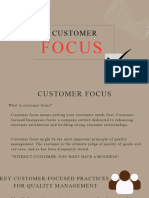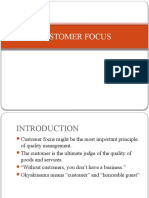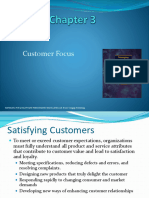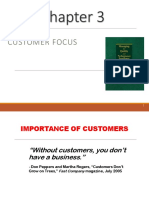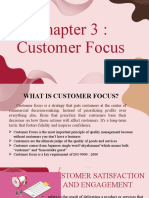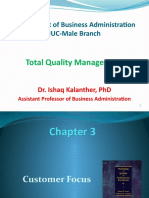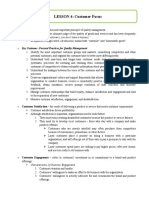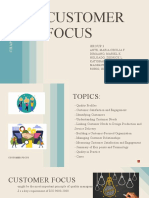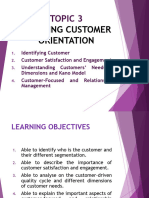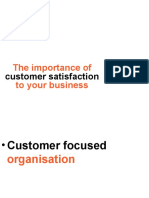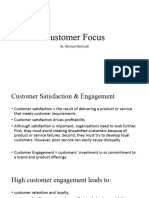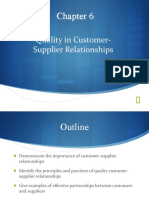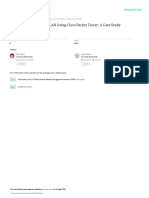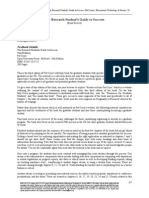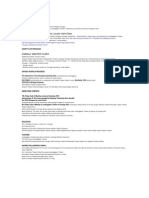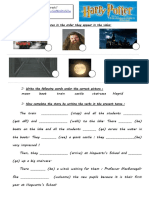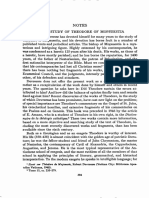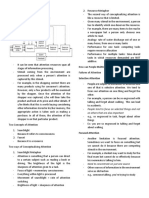0% found this document useful (0 votes)
19 views27 pagesCustomer Focus
Chapter 16 discusses the importance of customer focus in business, emphasizing the need to prioritize customer needs and satisfaction to drive growth and profitability. It covers various aspects such as customer engagement, segmentation, satisfaction measurement, and the use of tools like the Net Promoter Score to gauge loyalty. Additionally, it highlights the significance of analyzing customer feedback and maintaining strong relationships to enhance overall customer experience.
Uploaded by
jlgusion123Copyright
© © All Rights Reserved
We take content rights seriously. If you suspect this is your content, claim it here.
Available Formats
Download as PPTX, PDF, TXT or read online on Scribd
0% found this document useful (0 votes)
19 views27 pagesCustomer Focus
Chapter 16 discusses the importance of customer focus in business, emphasizing the need to prioritize customer needs and satisfaction to drive growth and profitability. It covers various aspects such as customer engagement, segmentation, satisfaction measurement, and the use of tools like the Net Promoter Score to gauge loyalty. Additionally, it highlights the significance of analyzing customer feedback and maintaining strong relationships to enhance overall customer experience.
Uploaded by
jlgusion123Copyright
© © All Rights Reserved
We take content rights seriously. If you suspect this is your content, claim it here.
Available Formats
Download as PPTX, PDF, TXT or read online on Scribd
/ 27


